The aim of the seminar this semester was for each one of us to contribute data regarding the streets of our hometowns to the worldwide database of Urbanization.org. We then researched into what could be deemed the ‘Future Street’. Then, we selected one street section from our first assignment and compared it to a similar street typology of another street from another student. Finally, based on the common problems and solutions that could be applied to them and our earlier research on Future Streets we proposed a new, advanced Future Street.
Sofia Andrea Champion and I (Mohor Bose), compared ‘Wide Streets’ of six or more travel lanes from our respective hometowns of Chihuahua, Mexico and Kolkata, India. First, we compared the general geographical and demographical parameters of the two cities to find the basic common links and stark differences. Here we also looked at the basic physical data of our chosen streets – typology, axis, origin, length, width, lane types, speed limit and average width-height ratio of buildings to the street.
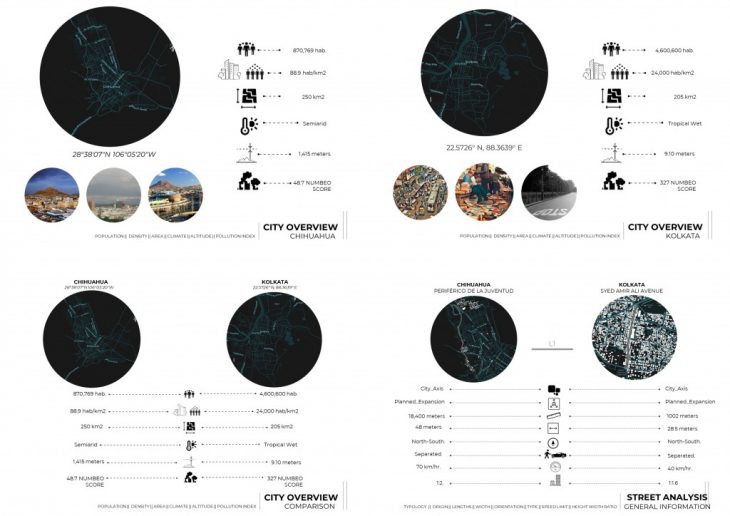
Comparing General City Information Parameters
Then we took a closer look at the street sections we chose to compare. The parameters for comparison were Land Use, Right of Way, Modes of Transport, Traffic Calming, Street Infrastructure, Street Facilities and Informal/Temporary Street Activities.
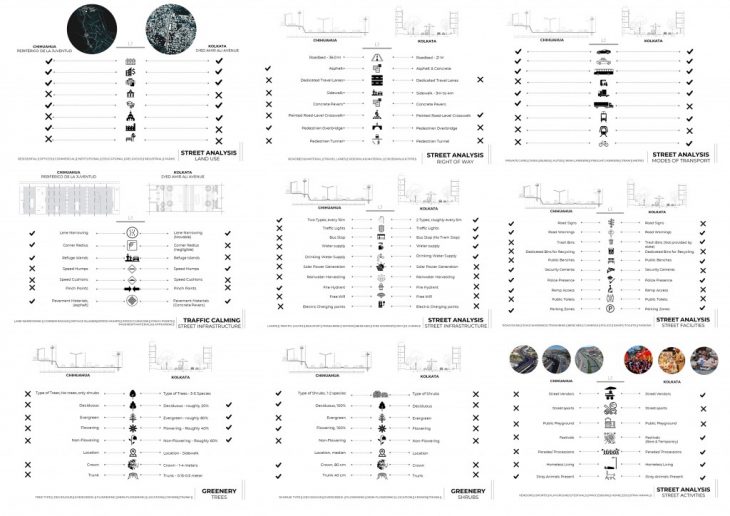
Detailed Street Comparison
Looking closely at this data we quickly realized the common problems despite some very different general characteristics like a huge difference in population density. The three things that stood out were:
- Use of asphalt and concrete road surfaces that large contribute to the Urban Heat Island Effect in the already hot climates of Chihuahua and Kolkata. Transforming as much of this road surface to a semi-permeable surface would immediately have a huge positive climatological and environmental impact. Due to the long daylight hours and strong sun in both Chihuahua and Kolkata it would also be advantageous to install photovoltaic flooring panels on the road and sidewalk surfaces.
- Lack of greenery and Public Infrastructure.
- At present, the streets are designed only keeping in mind vehicular traffic. A big factor in our new design proposals should be to give as much of the street back to the pedestrians and cyclists.
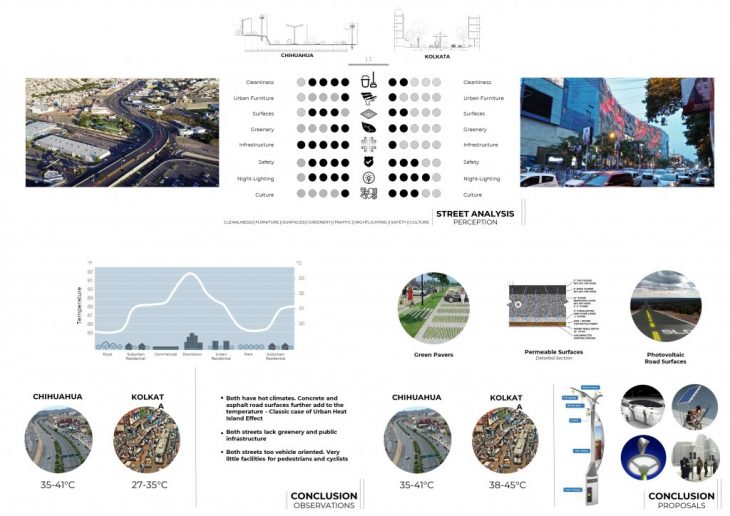
Street Perception, Inference and Proposals for Change
Finally, we applied these common proposals to our individual street sections. The principal common aim being to reduce non-permeable surfaces as much as possible.
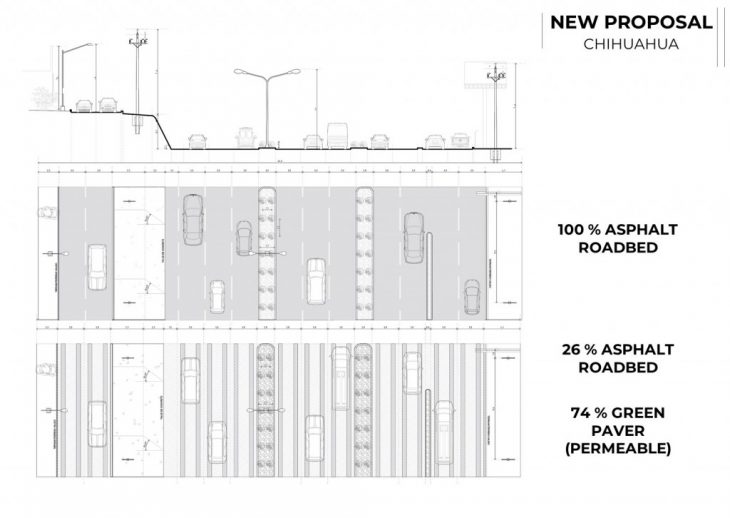
Chihuahua Future Street Section
In Periferico de la Juventud, Chihuahua the design strategy was to completely change all road surface to semi-permeable soft flooring, keeping only the load-bearing tire tracks on each lane in conventional non-permeable surface.
The result was a reduction from 100% non-permeable to only 26% non-permeable surfaces.
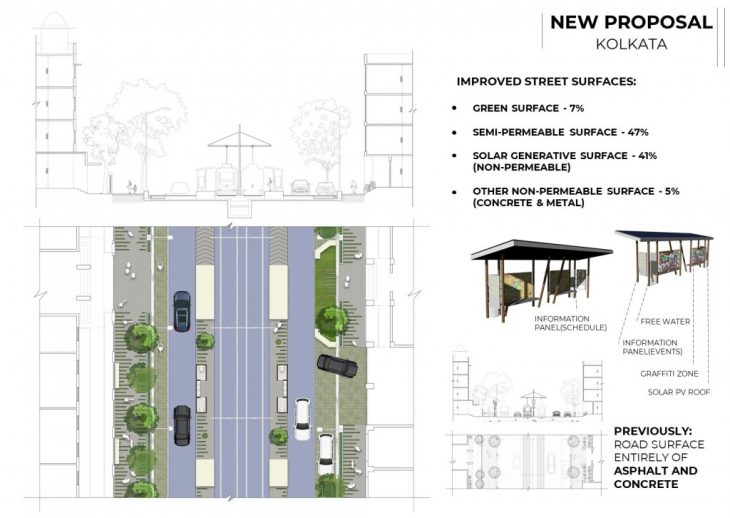
Kolkata Future Street Section
Syed Amir Ali Avenue, in Kolkata has a very high percentage of pedestrian and cycle traffic. Therefore, the new proposal is aimed at redesigning pedestrian-friendly spaces in addition to reducing non- permeable road surfaces. The major design changes are the addition of a tram island, a cycle track, and parklets along the parking lane. The sidewalks, tram island, parking lanes and cycle tracks now have semi-permeable pavers. The remaining road surface is retro-fitted with photovoltaic panels. With 12-13 daylight hours on average and 30kW generated per annum from one square foot, this can only be profitable in the long run. An stormwater collection system is also added to collect run-off from the non-permeable surfaces.
The result is a reduction of non-permeable surfaces from 100% to 46% but with 41% of that surface generating power (therefore resources) for the city. The remaining 54% surfaces are 7% green areas and 47% semi-permeable surfaces.
‘Urbanization – Street Analysis – Wide Streets’ is a project of IaaC, Institute for Advanced Architecture of Catalonia developed at Master in Advanced Architecture, MAA 01 in 2017 – 2018 of the Studio SE.3 Urbanization.org by :
Students:
Sofia Andrea Champion
Mohor Bose
Tutors:
Honorata Grzesikowska
Marta Mila